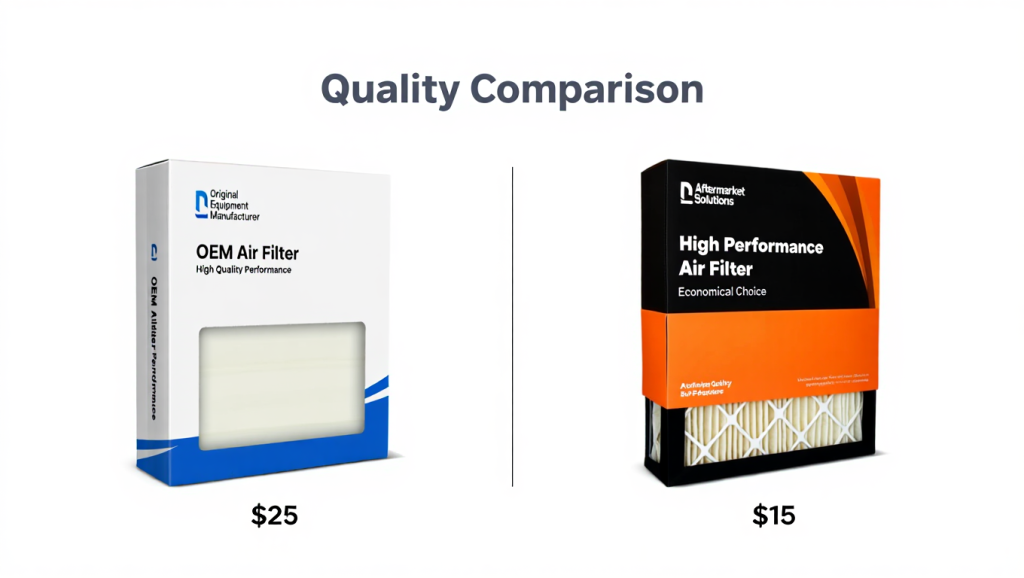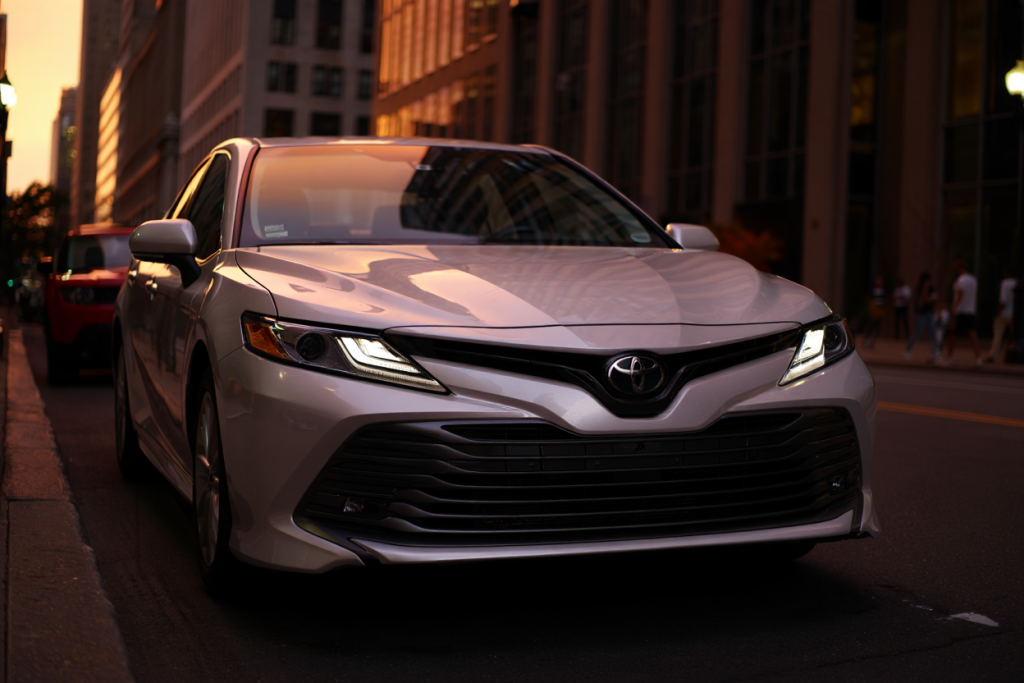Your car’s air filter might look like a throwaway piece of pleated paper, but it’s one of the most important—and most neglected—components protecting your engine. It stops dust, grit, pollen, and other airborne contaminants from entering the intake and combustion chamber.
This article explains, in practical detail, exactly what happens when you don’t replace the engine air filter, how to spot symptoms early, how to replace or clean filters safely, and how to choose between OEM and aftermarket options. You’ll get cost comparisons, DIY steps, and pro tips so you can protect your engine and avoid unnecessary repair bills.
The Role of a Car’s Air Filter
Before we talk about consequences, let’s be clear about the job the air filter performs and why it matters.
An internal combustion engine needs a huge volume of air to run—oxygen to mix with fuel for combustion. The air filter sits between the outside world and the intake tract and removes contaminants down to a specified particle size. Filter media vary (paper, foam, oiled cotton), but all aim to trap particulates while letting air flow freely. Proper filtration preserves cylinder walls, pistons, valves, and sensors like the mass airflow (MAF) sensor.
A healthy air filter supports correct air-fuel ratios, steady horsepower, stable idle, and clean exhaust. When the filter becomes restrictive or damaged, the engine’s computer adjusts fuel delivery to compensate, and that’s when you start to see performance and economy problems. Think of the filter as a low-cost insurance policy for your engine
What Happens If You Don’t Replace It?
Neglect doesn’t produce instant doom, but small problems compound into expensive ones. Below are the principal failure modes.
Reduced Engine Performance
When the pleats of the air filter load with dirt, the pressure drop at the intake grows. Less air reaching the cylinders means the engine can’t make as much power—throttle response dulls and acceleration becomes sluggish. For a commuter car, this is obvious climbing hills or merging onto the highway. For a turbocharged engine, a clogged intake increases turbo lag and decreases peak boost, compounding the power loss.
Over time, drivers report longer 0–60 times and a “soft” feel under heavy throttle. That lost performance isn’t just annoying—it can be dangerous in traffic when quick acceleration is needed.
Lower Fuel Economy
An engine’s efficiency depends on the right air-to-fuel mixture. A restricted air supply confuses the engine control unit (ECU), which may enrich fuel delivery to avoid lean conditions. The result: you burn more fuel for the same output. Real-world reports and service records commonly show 5–15% loss in MPG from severely restricted filters. Multiply that over months and you’ve paid more at the pump than a replacement filter would cost many times over.
Contamination and Engine Wear
If the filter fails structurally or becomes saturated with dust, small abrasive grains can bypass the media and enter the cylinders. That leads to micro-scoring on cylinder walls and piston rings—wear that reduces compression and increases oil consumption. Cylinder damage is expensive to repair; the cost of a couple of replacement filters pales in comparison to cylinder hone, new rings, or a full overhaul.
Sensor Problems and Check Engine Light
Modern engines rely on air measurement devices (MAF or MAP sensors). Dirty or oil-contaminated filters can allow particulates to coat the MAF element, or over-oiled reusable filters can transfer oil mist to the sensor, both of which give false airflow readings. The ECU logs codes (e.g., P0100-series) and the check engine light comes on. Ignoring that can hide other issues and lead to unnecessary replacements if the root cause isn’t diagnosed.
Increased Emissions and Failed Inspections
A rich-running engine (too much fuel) due to restricted airflow produces excess hydrocarbons and carbon monoxide. That raises emissions and increases the chance of failing mandated inspections. There’s also a real environmental cost to burning extra fuel and emitting more pollutants.
How to Know When Your Air Filter Needs Replacing?
Visual Inspection: The Quick Test
Remove the filter and hold it up to sunlight. If you can’t see light through most pleats or the media looks dark and packed, it’s time. Also look for debris, oil saturation, or cuts in the filter media. Panel filters are easy to inspect; round cone filters require removing intake hose clamps.
Driving Symptoms to Watch For
- Sluggish acceleration and poor throttle response.
- Black, sooty exhaust or increased smoke under acceleration.
- Rough idle or hesitation.
- Unexplained drop in fuel economy.
- Whistling or sucking noises from the intake (airflow restriction or leaks).
If these show up, check the filter before paying for sensors or fuel-system work.
Manufacturer Recommendations and Real Conditions
Most manufacturers list air filter replacement intervals in the owner’s manual—typically 15,000–30,000 miles under normal driving. But these numbers assume paved roads and standard conditions. If you live in a dusty area, tow frequently, or do a lot of off-road driving, halve those intervals and inspect more often. Visual checks at every oil change are a low-effort, high-return habit.
OEM vs Aftermarket Air Filters — Which Should You Buy?

Below is a practical comparison:
| Attribute | OEM Filter | Aftermarket Paper Filter | Reusable / Performance Filter |
| Fit/Compatibility | Exact fit | Usually fit well | Fit depends on design |
| Cost | Higher | Lower | Higher upfront |
| Filtration Efficiency | Factory spec | Varies by brand | Varies — often more airflow |
| Maintenance | Replace | Replace | Clean & re-oil periodically |
| Warranty Impact | Safe | Usually safe | May affect warranty if non-approved |
Pros & Cons (short):
- OEM: Reliable fit and filtration; best for warranty peace-of-mind.
- Aftermarket (paper): Good value; many brands (Fram, Bosch, Mann) match OEM performance at lower cost.
- Reusable (oiled cotton/foam): Potential airflow gains and long lifespan when maintained; risk of MAF contamination if over-oiled or cleaned improperly.
Buyer tip: If you prioritize low hassle and consistent protection, OEM or high-quality aftermarket paper filters are a safe choice. Use reusable filters only if you follow the cleaning/oiling regimen exactly.
Step-by-Step: How to Replace Your Engine Air Filter (DIY)
(Introduction: most replacements are simple, inexpensive, and quick.)
Tools & Time: Screwdriver or socket, 10–20 minutes, $15–$40 for a filter.
- Locate the airbox under the hood—usually a rectangular plastic box with clips or screws.
- Unclip or unscrew the housing; lift the lid.
- Remove the old filter, note the orientation, and inspect the housing for leaves or debris. Wipe it out with a clean rag.
- Insert the new filter in the same orientation, seat the edges, and reattach the housing.
- Start the engine and listen for intake leaks.
Safety note: Do not over-tighten plastic screws/clips. Dispose of the old filter responsibly.
How to Clean and Maintain a Reusable Air Filter?
If you have a washable oiled filter (e.g., K&N-type), follow these broad steps: remove the filter, wash with a manufacturer-approved cleaner, rinse until clear, let dry completely, re-oil evenly with the provided oil, and reinstall. Over-oiling leaves residue that can foul the MAF sensor. Never use compressed air to “blow” a paper filter—this damages the media.
Common Mistakes Drivers Make
- Waiting for the check engine light — by then damage or sensor contamination may already exist.
- Blowing out filters with air compressors — reduces filtration efficiency.
- Installing wrong-sized filters — allows bypass and unfiltered air.
- Over-oiling reusable filters — fouls sensors and creates false diagnostics.
- Using low-quality cheap filters — thin media and poor pleat spacing fail to stop fine particles.
Cost Comparison and Return on Maintenance
| Item | Typical Cost (DIY) | Shop/Dealer Cost |
| Paper engine air filter | $15–$40 | $40–$80 |
| Reusable filter (one-time) | $50–$150 | N/A |
| MAF sensor replacement | — | $200–$400 |
| Engine repair (cylinder) | — | $1,500–$5,000+ |
A clean filter costs pennies per mile and prevents expensive sensor or engine work. Replacing filters proactively is one of the highest ROI maintenance tasks you can do.
Pro Tips to Extend Filter Life and Protect Your Engine
- Inspect air filter at every oil change.
- Avoid tailgating dusty trucks; the cloud they kick up clogs filters fast.
- Use recirculation mode in heavy dust or pollen.
- If you tow or drive off-road, inspect the filter more frequently.
- Keep the airbox seal and intake hoses in good condition to prevent bypass leaks.
- Use high-quality filters from reputable brands; ultra-cheap filters aren’t worth the risk.
Conclusion
Skipping an air filter replacement may feel minor, but the consequences compound: reduced performance, poorer fuel economy, sensor failures, higher emissions, and potentially expensive engine repairs. The fix is cheap, quick, and effective. Inspect your air filter regularly, replace it per your driving conditions, and choose quality filters to protect your engine.
If you want to avoid unnecessary repairs and keep your car running smoothly, check your air filter today. Browse our selection of quality engine air filters (OEM and trusted aftermarket options) and grab a replacement that fits your vehicle—fast, affordable, and ready to protect your engine.
FAQs
What happens if I drive with a dirty air filter?
Driving with a dirty air filter restricts airflow, causing sluggish acceleration, reduced throttle response, lower fuel economy, rough idling, and increased emissions. Tiny abrasive particles may bypass the element and score cylinder walls over time, accelerating wear. Short-term symptoms are fixable; chronic neglect risks expensive engine damage, and costly repairs.
Can a dirty air filter cause the check engine light?
A severely clogged air filter can affect airflow readings and trigger the mass airflow (MAF) sensor faults, causing the engine control unit to log fault codes and illuminate the check-engine light. Mechanics often diagnose P0100–P0104 or fuel-trim related trouble codes when intake airflow is inconsistent or restricted significantly, and repairs.
How much does it cost to replace an air filter?
Replacing an engine air filter is inexpensive and one of the best preventive steps: DIY paper filters cost roughly $15–$40 depending on vehicle and brand. A shop or dealer replacement including labor typically runs $50–$100. Compared to potential MAF or engine repairs, routine replacement saves significant money over the years.
Can I clean and reuse my car’s air filter?
Paper disposable filters should be replaced, not cleaned. Reusable performance filters—such as oiled cotton gauze types—can be cleaned and re-oiled following the maker’s process. Improper cleaning or over-oiling risks fouling the MAF sensor or reducing filtration. Always follow the manufacturer’s instructions precisely to avoid damage and voiding warranty coverage entirely.
How often should I change it if I live in a dusty area?
If you frequently drive on unpaved roads, carry heavy loads, or live in a dusty climate, inspect your air filter every oil change and replace it every 10,000–15,000 miles. Visual checks are key: if light doesn’t pass through pleats or heavy dirt is visible, change immediately for engine protection and reliable performance.

Benjamin Grey is an automotive engineer and writer at Car Parts Advisor. With years of experience in the automotive industry, he shares expert advice on car parts, maintenance, and repairs to help car owners keep their vehicles running smoothly.





